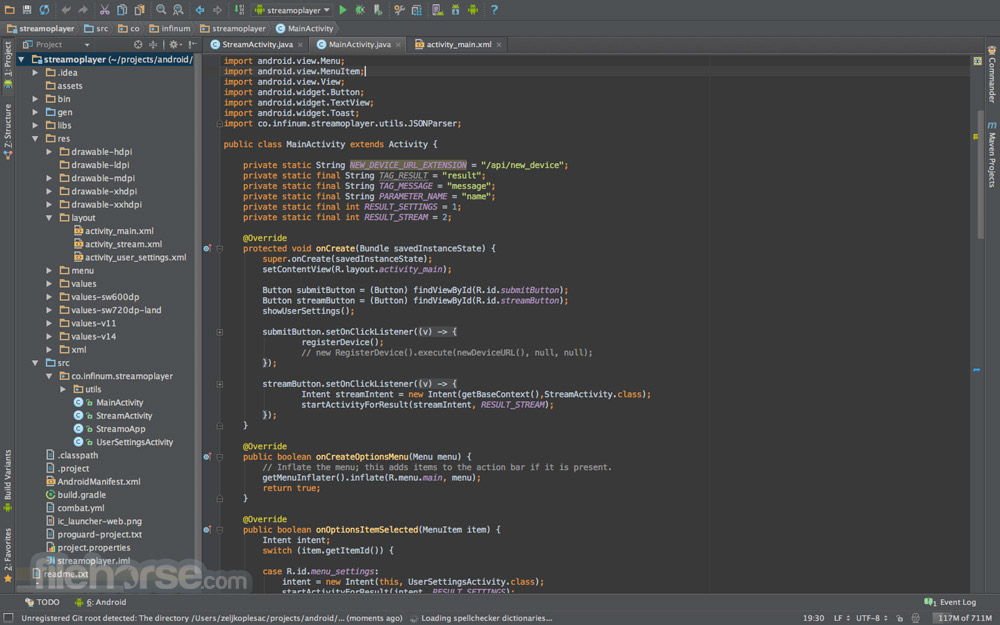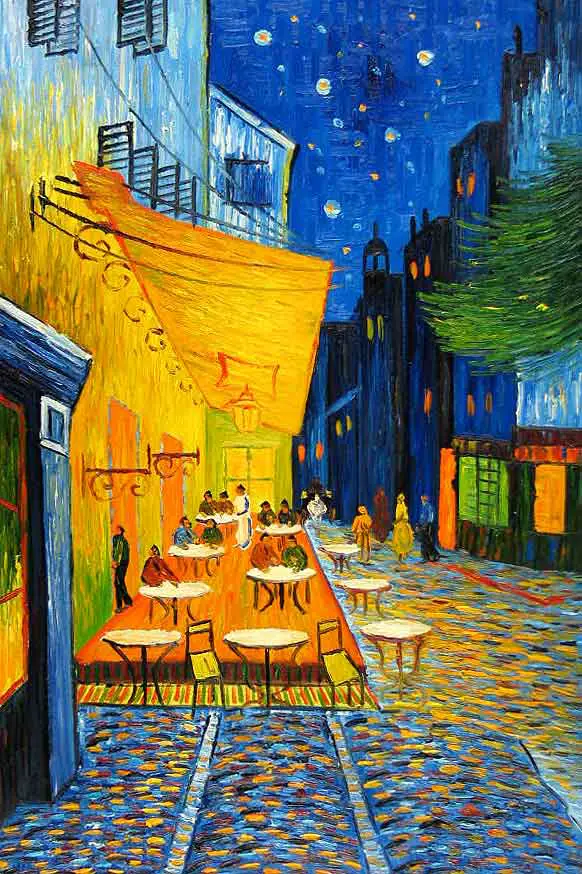- Mac For Java Programming For Beginners
- Java Development On Mac
- Java Programming For Mac
- Mac For Java Programming Software
Cocoa is Apple's native object-oriented application programming interface (API) for its desktop operating system macOS. Cocoa consists of the Foundation Kit, Application Kit, and Core Data frameworks, as included by the Cocoa.h header file, and the libraries and frameworks included by those, such as the C standard library and the Objective-C runtime. Cocoa applications are typically. Open TextEdit Application. To write your code, you will use a text editor application included on all.
This DrJava-based Java programming environment is no longer being supported(because DrJava in no longer being actively developed and DrJava is incompatible with Java 11).It has been replaced by the following IntelliJ-based programming environment forMac OS X.
This document instructs you on how to set up our Java programming environment for your Mac OS X computer. It also provides a step-by-step guide for creating, compiling, and executing a Java program using either DrJava or the Terminal.All of the software used is freely available.
You will need an Intel-based Mac runningMac OS X 10.8 (Mountain Lion) to Mac OS X 10.13 (High Sierra).
You can defer steps 4–6 until Section 1.5 of the textbook.
Our installer downloads, installs, and configures the Java programming environment you will be using, including DrJava, and the standard libraries from our textbook.
- Log in to the user account in which you will be programming.Your account must have Administrator privileges (with a non-blank password)and you must be connected to the Internet.
- Install Oracle's implementation of the Java Platform, Standard Edition Development Kit (JDK 8).Do not install either JDK 9 or JDK 10, as they are currently incompatible with DrJava.
- Browse toJava SE Development Kit 8u171.In the first table, check Accept License Agreementand the click jdk-8u171-macosx-x64.dmg,which corresponds to the entry for Mac OS X.The exact verison 8u171 is not essential.
- Double click the downloaded file jdk-8u171-macosx-x64.dmg to begin the installation.Enter your OS X password when prompted.We recommend all of the default options.
- Delete jdk-8u171-macosx-x64.dmg.
- To install,
- Download introcs.zip to the Desktop;double-click it to unzip (if necessary). This creates introcs.app. Security and Privacy -> General -> Allow applications downloaded from: Anywhere.
To enable this option, you may need to click the lock in the lower left-hand corner(and type your password when prompted).-->
- Double-click introcs.app to perform the installation.If you receive a warning that introcs.app is an applicationdownloaded from the Internet, click Open.
- Enter your OS X password when prompted.
- Download introcs.zip to the Desktop;double-click it to unzip (if necessary). This creates introcs.app. Security and Privacy -> General -> Allow applications downloaded from: Anywhere.
- If the installation succeeds, you will see the following:
- A Terminal window containing approximately thisexecution log.
- A Standard Drawing window containing a red bullseye and a textbook graphic.
- Delete introcs.zip and introcs.app.
Now you are ready to write your first Java program.You will develop your Java programs in an application called DrJava.DrJava features many specialized programming tools including syntax highlighting,bracket matching, auto indenting, and line numbering.
- The installer creates a shortcut to DrJava on the desktop.Double-click it to launch DrJava.If you receive a warning about incoming network connections,click Allow.
- In the main DrJava window, type the Java programHelloWorld.java exactly as it appears below. If you omit even a semicolon, the program won't work. As you type, DrJava does the indenting for you.
- Finally, click the Save button to save the file, using the name HelloWorld.java.The filename is case sensitive and must exactly match the name of theclass in the Java program.
It is now time to convert your Java program into a form more amenable for execution on a computer. To do this, click the Compile button.If all goes well, you should see the following message in the Compiler Outputpane at the bottom:
If DrJava complains in some way, you mistyped something.Check your program carefully, using the error messages in the Compiler Output paneas a guide.
Now it is time to run your program. This is the fun part.
- Type the following in the Interactions pane at the bottom.By convention, we highlight the text you type in boldface. If all goes well, you should see the following message:
- You may need to repeat this edit–compile–execute cycle a few times before it works. Ask for help if you can't see the mistake.
The command-line provides capabilities beyond those available in DrJava,including redirection and piping.You will type commands in an application called the Terminal.
- The installer creates a shortcut on the desktop to the Terminal.Double-click it to launch the Terminal.You should see something like:The ~ is shorthand for your home directory /Users/<username>.
- To confirm that the Java compiler is installed,type the command in boldface below and check that the results match:It's important that you see the number 1.8for the Java version number, but the rest is not critical.
- To confirm that you the Java interpreter is installed, typethe command in boldface below and check that the results match:Again, it's important that you see the number 1.8for the Java version number, but the rest is not critical.
You will use the javac command to convert your Java program into a form more amenable for execution on a computer.
- From the Terminal, navigate to the directory containing HelloWorld.java,say ~/Desktop/hello,by typing the cd (change directory) commands below:The ~ is shorthand for /Users/<username>.
- Compile it by typing the javac command below:Assuming the file HelloWorld.java is in the current working directory,you should see no error messages.
- To make our textbook standard libraries accessible to Java,use the command javac-introcs instead.For example,BouncingBall.javais a program that uses our standard drawing library.After downloading the file to the current directory,you can compile it with the following command:
You will use the java command to execute your program.
- From the Terminal, type the java command below.You should see the output of the program.
- To make our textbook standard libraries accessible to Java,use the command java-introcs instead. For example, to executeBouncingBall.java(assuming you downloaded and compiled it in the previous step), type the following command:
How long should the installer take?Once downloaded, the Oracle Java installer should take about 10 seconds and the introcs.app installer should take about 20 seconds. If you have virus detection software running (such as McAfee Endpoint), each could take 5–10 minutes (or more).
The installer didn't work on my machine. What should I do?Check out the following three Q+As. If these don't resolve the issue,please contact a staff member to identify what went wrong.
When I run the installer, the terminal window just waits after asking for a password.But, I don't even have a password-enabled account.You must have a non-blank password. Here are instructions forresetting a user's password.
When I run the installer, I get the error message'bash: /Volumes/Macintosh: No such file or directory'.Your user account and OS must be on the same volume.
When I run the installer, I get an error like bash: /private/var/folders/70/n8stth1d1x33hrw8n07kf1280000gn/T/AppTranslocation/45FC25B7-17E3-46DF-AC27-9A7EF56DDFD3/d/algs4.app/Contents/Resources/launcher.sh: No such file or directory.What should I do? This is likely due to OS X Sierra path randomization.Use the Finder to move introcs.app to some other folder and try again.
What does the installer do?In short, it downloads, installs, and configures Checkstyle, Findbugs, and DrJava, and the textbook standard libraries.Here is a more detailed list:


- Checks that Java is installed.
- Downloads the textbook standard libraries fromstdlib.jar.
- Downloads the Java wrapper scriptsjavac-introcs andjava-introcs.
- Downloads and installsFindbugs 3.0.1from findbugs.zip.Downloads our findbugs configuration file findbugs.xml and wrapper script findbugs-introcs.
- Downloads and installsPMD 5.8.1from pmd.zip.Downloads our PMD configuration file pmd.xmland wrapper script pmd-introcs.
- Downloads and installsCheckstyle 8.2from checkstyle.zip.Downloads our checkstyle configuration file checkstyle-introcs.xml and wrapper script checkstyle-introcs.
- Downloads and installs the latest stable version ofDrJava,from DrJava.zip.Creates a shortcut to DrJava on the Desktop.Downloads and installs the DrJava configuration file fromdrjava-config.txtto /Users/<username>/.drjava.Note that this will overwrite any existing .drjava configuration file.
- Tests that the installation succeeded by compiling and executing TestIntroCS.java.
Why does the installer need my password?The installer copies files into /usr/local/bin and/usr/local/introcs,which require superuser privileges.
Mac For Java Programming For Beginners
How do I completely uninstall introcs.app?
- Delete the directory /usr/local/introcs.
- To uninstall DrJava, delete the following two files:
- /Applications/DrJava.app.
- /Users/<username>/.drjava.
- To uninstall the Java, Checkstyle, and Findbugs wrapper scripts,delete the following files:
- /usr/local/bin/javac-introcs
- /usr/local/bin/java-introcs
- /usr/local/bin/findbugs-introcs
- /usr/local/bin/pmd-introcs
- /usr/local/bin/checkstyle-introcs
- Delete the shortcut to DrJava and Terminal on the Desktop.
What happens if I re-run the installer?It will re-download, install, and configure Checkstyle, Findbugs, DrJava, and our textbook libraries.
Can I use a different version of Java?Any version of Java 8 (either Oracle or OpenJDK) should work fine.Note that DrJava does not currently work with Java 9.
I have both Java 8 and Java 9 installed, but the default version is Java 9. How doI change the default version back to Java 8?To disable Java 9, type the following commands in the Terminal:
You should still be able to use Java 9 by specifying the full path tojavac and Java Development On Mac
java, e.g.,/Library/Java/JavaVirtualMachines/jdk-9.0.1.jdk/Contents/Home/bin/javac.Why I try to run DrJava, I get the following error message. How should I proceed?
Are you sure that you are using the version of DrJava that was installedby our auto-installer (and not downloaded from the DrJava website)?We suggest deleting any older versions of DrJava and using the one that the auto-installer copied to the /Applications directory.Can I use a different IDE? Yes you can use another IDE (such as Eclipse) butyou will have to configure the IDE properties yourself (such as the classpath). Reset Interactions.From the Terminal, type Ctrl-c.
When using standard input, how do I signify that there is no more data?If you are typing input in the Terminal or DrJava, type Ctrl-d on its own line.
I successfully compiled HelloWorld.java with javac, but, when I execute,I get the error message'Exception in thread 'main' java.lang.NoClassDefFoundError: HelloWorld'.What am I doing wrong?First, verify that the file HelloWorld.class is in the current directory.Be sure to type java HelloWorld without a trailing .classor .java.-->
When I compile or execute a program in Terminal that uses thetextbook standard library, I get an error that it cannot find the library. How can I fix this?Use the wrapper scripts javac-introcs and java-introcs,which add stdlib.jar to the Java classpath.

Which shell should I use in the Terminal?Bash is the default shell in Mac OS X, but feel free to usewhichever one you prefer.
Where can I learn more about the command line?Here is a short tutorial on thecommand line.
Last modified on August 14, 2019.
Copyright © 2000–2019Robert SedgewickandKevin Wayne.All rights reserved.
In this section, our plan is to lead you into the world of Java programming by taking you through the three basic steps required to get a simple program running. As with any application, you need to be sure that Java is properly installed on your computer.You also need an editor and a terminal application. Here aresystem specific instructions for three popular home operating systems.[Mac OS X ·Windows ·Linux]
Programming in Java.
 We break the process of programming in Java into three steps:
We break the process of programming in Java into three steps:
- Create the program by typing it into a text editor andsaving it to a file named, say, MyProgram.java.
- Compile it by typing 'javac MyProgram.java' in theterminal window.
- Execute (or run) it by typing'java MyProgram' in the terminal window.
The first step creates the program; the second translates it into a languagemore suitable for machine execution (and puts the result in a file namedMyProgram.class); the third actually runs the program.
- Creating a Java program.A program is nothing more than a sequence of characters, like a sentence, aparagraph, or a poem. To create one, we need only define that sequence charactersusing a text editor in the same way as we do for email.HelloWorld.java is an example program.Type these character into your text editor and save it into a filenamed HelloWorld.java.
- Compiling a Java program.A compiler is an application that translates programs from theJava language to a language more suitable for executing on the computer.It takes a text file with the .java extension as input (yourprogram) and produces a file with a .class extension (the computer-language version). To compile HelloWorld.java typethe boldfaced text below at the terminal. (We use the % symbolto denote the command prompt, but it may appear different dependingon your system.)If you typed in the program correctly, you should see no error messages.Otherwise, go back and make sure you typed in the program exactly asit appears above.
- Executing (or running) a Java program.Once you compile your program, you can execute it.This is the exciting part, where the computer follows your instructions.To run the HelloWorld program, type the following in the terminal window:
If all goes well, you should see the following response
- Understanding a Java program.The key line with System.out.println() prints the text 'Hello, World'in the terminal window.When we begin to write more complicated programs, we will discuss themeaning of public,class, main,String[],args,System.out, and so on.
- Creating your own Java program.For the time being, all of our programs will be just likeHelloWorld.java, except with a different sequence of statementsin main(). The easiest way to write such a program is to:
- Copy HelloWorld.java into a new file whose name is theprogram name followed by .java.
- Replace HelloWorld with the program name everywhere.
- Replace the print statement by a sequence of statements.
Errors.
Most errors are easily fixed by carefully examining the program as wecreate it, in just the same way as we fix spelling and grammatical errors when we type an e-mail message.- Compile-time errors.These errors are caught by the system when we compile the program, because they prevent the compiler from doing the translation (so it issues an error message that tries to explain why).
- Run-time errors.These errors are caught by the system when we execute the program, because the program triesto perform an invalid operation (e.g., division by zero).
- Logical errors.These errors are (hopefully) caught by the programmer when we execute the programand it produces the wrong answer.Bugs are the bane of a programmer's existence.They can be subtle and very hard to find.
Input and output.
Java Programming For Mac
Typically, we want to provideMac For Java Programming Software
input to our programs:data that they can process to produce a result. The simplest way to provide input data is illustrated in UseArgument.java.Whenever this program is executed, it reads the command-line argument that you type after the program name and prints it back out to the terminal as part of the message.Exercises
- Write a program TenHelloWorlds.javathat prints 'Hello, World' ten times.
- Modify UseArgument.java to make a programUseThree.java that takes three namesand prints out a proper sentence with the names in the reverse of the order given, so that for example,'java UseThree Alice Bob Carol'gives 'Hi Carol, Bob, and Alice.'.
Web Exercises
- Write a program Initials.java thatprints your initials using nine rows of asterisks like the one below.
- Describe what happens if, in HelloWorld.java, you omit
- main
- String
- HelloWorld
- System.out
- println
- Describe what happens if, in HelloWorld.java, you omit
- the ;
- the first '
- the second '
- the first {
- the second {
- the first }
- the second }
- Describe what happens if, in HelloWorld.java,you misspell (by, say, omitting the second letter)
- main
- String
- HelloWorld
- System.out
- println
- I typed in the following program. It compiles fine, but when I executeit, I get the error java.lang.NoSuchMethodError: main.What am I doing wrong?Answer: you forgot the String[] args. It isrequired.
Last modified on August 02, 2016.
Copyright © 2000–2019Robert SedgewickandKevin Wayne.All rights reserved.
